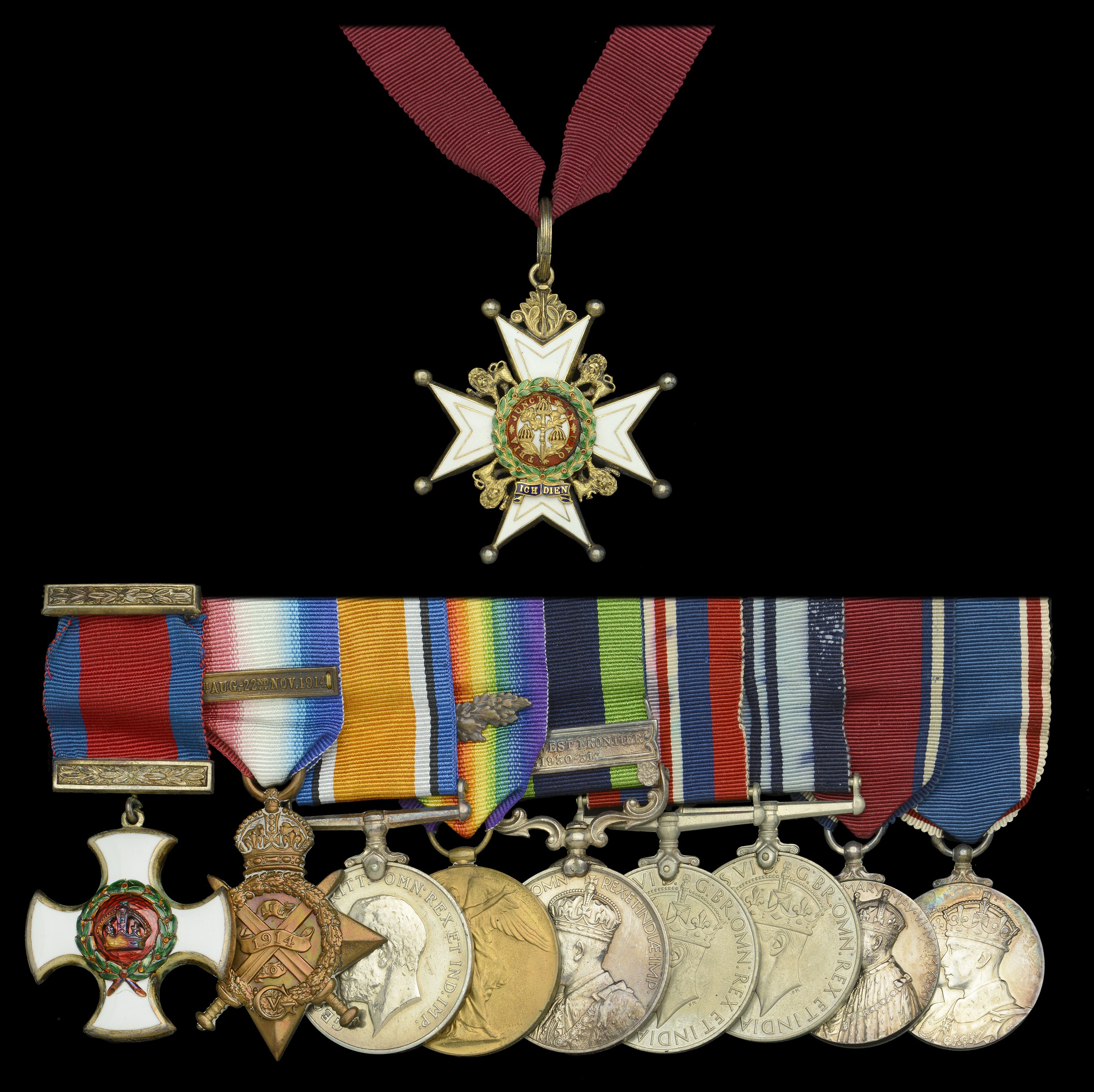An inter-War C.B. and Great War D.S.O. group of ten awarded to Major-General Macan Saunders, Indian Army, temporarily employed in 1914 under Royal Marines, attached Royal Naval Division, he served at Antwerp and at Gallipoli from the first landing to evacuation The Most Honourable Order of the Bath, C.B. (Military) Companion’s neck badge, silver-gilt and enamels; Distinguished Service Order, G.V.R., silver-gilt and enamels, with integral top riband bar; 1914 Star, with clasp (Major M. Saunders, R.M. Staff 2nd Brigade R.N. Div.); British War and Victory Medals, with M.I.D. oak leaves (Lt. Col. M. Saunders.); India General Service 1908-35, 1 clasp, North West Frontier 1930-31 (Col. M. Saunders.); War Medal 1939-45; India Service Medal; Jubilee 1935; Coronation 1937, the last nine mounted as worn, reverse centre depressed on the first, some light contact marks, otherwise generally good very fine (10) £3,000-£4,000 --- Importation Duty This lot is subject to importation duty of 5% on the hammer price unless exported outside the UK --- --- C.B. London Gazette 1 January 1935: ‘Commanding Delhi Brigade Area.’ D.S.O. London Gazette 17 October 1917: ‘Capt. (Temporary Major) Sikhs, Indian Army). M.I.D. London Gazette 5 November 1915 (R.N. Div. (R.M.), Dardanelles); 13 July 1916 (Capt, 36 Sikhs, Dardanelles); 31 October 1917 (Maj. Staff, Sikhs, India); 21 February 1919 (Dunsterville Mission, Mesopotamia); 5 June 1919 (North Persian Force, Mesopotamia). Macan Saunders was born on 9 November 1884, oldest son of Colonel M. W. Saunders. He was educated at Malvern College and R.M.A. Woolwich. Lieutenant, Royal Artillery, 1903; Lieutenant, Indian Army, 1907; Captain, 1912; Major, 1918; Lieutenant-Colonel, 1919; Colonel, 1923; Major-General, 1935. Served in India until 1914, except for a year in Russia. Appointed Staff Captain and 3rd in command of the Second Royal Naval Brigade from August 1914 until June 1915, and Brigade Major of the Royal Naval Division in Gallipoli from June to August 1915. He was present during 1914 in the operations in Belgium and the siege of Antwerp, and in 1915 in Gallipoli, from the first landings to the evacuation. He was subsequently GSO3 in Egypt to March 1916; Brigade Major with the Eastern Persian Field Force to April 1917; GSO2 and Intelligence Officer with Major-General Dunsterville’s Mission (Dunsterforce) through North West Persia to the Caucasus, 1918; GSO1 Caucasus Section, GHQ British Salonika Force 1919 (wounded, despatches five times, DSO, Brevet Lt. Col.). After the war he was Military Attaché at Tehran, Persia, 1921-24; Deputy Director, Military Intelligence, AHQ India 1924-29; Director Military Operations, AHQ India 1929-30; Commander, Wana Brigade, Waziristan 1930-34; ADC to the King 1931-35; Commander Delhi Independent Brigade Area 1934-36; Deputy Adjutant-General AHQ India 1936-38; Commander Lahore District 1938; retired 1940. Chairman, Central Interview Board for Commissions, 1941-43; President Services Selection Board, 1943-47. Major-General Saunders died at his home in Fauvic, Jersey, C.I. on 2 April 1956.





